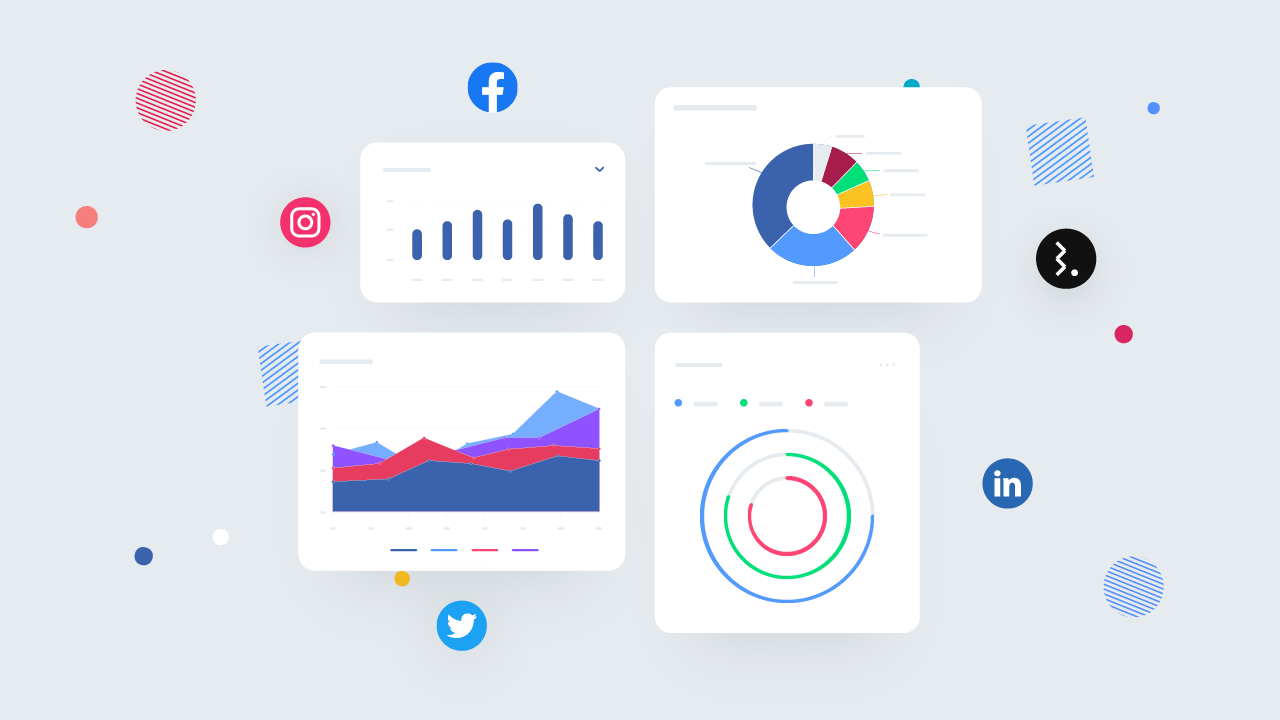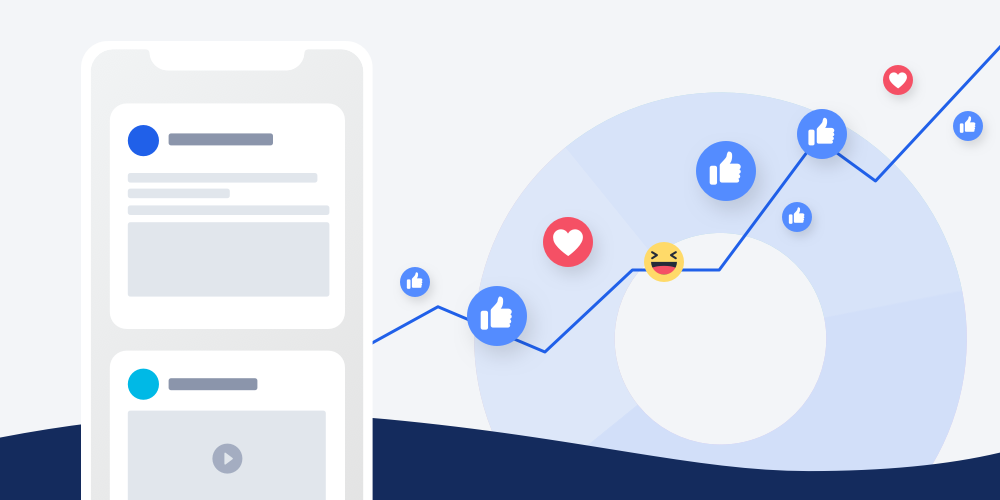In today’s digital age, social media has become an integral part of our lives, and for businesses, it’s a goldmine of opportunities. But to harness the full potential of social media, you need more than just a presence; you need insights. That’s where social media reporting platforms come into play. These tools help you make sense of your social media activities by providing detailed reports and analytics. Let’s dive into the world of social media reporting platforms and see how they can transform your digital strategy.
Understanding Social Media Reporting Platforms

1. What is Social Media Reporting?
Social media reporting involves collecting and analyzing data from various social media platforms to understand the performance of your content, campaigns, and overall social presence. It encompasses tracking metrics like engagement, reach, impressions, and conversions to gauge the effectiveness of your social media efforts.
2. Key Metrics in Social Media Reporting
Understanding the key metrics is crucial for effective social media reporting. Here are some of the primary ones:
- Engagement: Likes, comments, shares, and reactions.
- Reach: The number of unique users who see your content.
- Impressions: The total number of times your content is displayed.
- Conversions: Actions taken by users that meet a predefined goal, like signing up for a newsletter.
- Click-Through Rate (CTR): The ratio of users who click on a link to the number of total users who view the content.
Benefits of Using Social Media Reporting Platforms
1. Improved Decision-Making
With comprehensive data at your fingertips, you can make informed decisions about your social media strategy. These insights help you understand what works and what doesn’t, enabling you to allocate resources more effectively.
2. Enhanced Marketing Strategies
By analyzing the performance of your social media campaigns, you can refine your marketing strategies to better meet your goals. This might involve tweaking your content, targeting different audiences, or changing the timing of your posts.
3. Better Audience Understanding
Social media reporting platforms provide detailed demographic data about your audience. This information can help you tailor your content to better meet the needs and preferences of your followers, ultimately increasing engagement and loyalty.
Top Social Media Reporting Platforms
1. Overview of Popular Platforms
There are numerous social media reporting platforms available, each offering unique features and capabilities. Some of the most popular ones include Hootsuite, Sprout Social, Buffer, Google Analytics, and AIM Insights.
2. Features to Look For
When choosing a social media reporting platform, consider the following features:
- Comprehensive analytics: Detailed reports on various metrics.
- Customizable dashboards: Ability to tailor reports to your needs.
- Integration capabilities: Compatibility with other tools and platforms.
- Scalability: Suitable for businesses of different sizes.
Platform 1: Hootsuite
Key Features
Hootsuite is a versatile platform that supports multiple social media networks. Its features include:
- Social media scheduling: Plan and automate posts.
- Analytics and reporting: Detailed performance reports.
- Team collaboration: Manage roles and permissions.
- Monitoring and listening: Track brand mentions and keywords.
Platform 2: Sprout Social
Key Features
Sprout Social is known for its powerful analytics and user-friendly interface. Key features include:
- Social media management: Schedule and publish content.
- Analytics and reporting: In-depth reports with customizable options.
- Engagement tools: Unified inbox for all social messages.
- Social listening: Track and analyze conversations about your brand.
Platform 3: Buffer
Key Features
Buffer is a straightforward platform ideal for scheduling posts and analyzing performance. Its features include:
- Content scheduling: Plan posts across various platforms.
- Analytics: Basic to advanced performance reports.
- Engagement: Tools to interact with your audience.
- Team collaboration: Manage roles and workflow.
Platform 4: Google Analytics
Key Features
While not exclusively a social media tool, Google Analytics provides robust data tracking for your social media traffic. Features include:
- Traffic analysis: Detailed insights into website traffic sources.
- User behavior tracking: Understand how users interact with your site.
- Conversion tracking: Monitor goal completions and ROI.
- Custom reports: Tailor data reports to specific needs.
Platform 5: Socialbakers
Key Features
Socialbakers is an AI-powered platform that offers extensive social media analytics and management tools. Key features include:
- AI analytics: Predictive analytics and insights.
- Content scheduling: Plan and automate posts.
- Competitor analysis: Benchmark against competitors.
- Audience insights: Detailed demographic data.
How to Choose the Right Platform
1. Assessing Your Needs
Before choosing a platform, identify your specific needs. Consider factors like the size of your team, the platforms you need to manage, and your budget.
2. Comparing Features and Pricing
Evaluate the features and pricing of different platforms. Look for tools that offer the best value for your needs, balancing cost with the capabilities provided.
Integrating Social Media Reporting Platforms
1. Connecting with Other Tools
Ensure that the platform you choose can integrate with other tools you use, such as CRM systems, email marketing software, and data visualization tools.
2. Ensuring Data Accuracy
To make the most of your reports, it’s essential to ensure the data is accurate. Regularly check your integration settings and update them as necessary to maintain data integrity.
Maximizing the Use of Social Media Reports
1. Analyzing Data
Don’t just collect data; analyze it to uncover trends and insights. Look for patterns in engagement, identify top-performing content, and understand what drives conversions.
2. Applying Insights to Strategies
Use the insights gained from your reports to refine your social media strategies. Adjust your content, posting schedule, and targeting based on what the data reveals.
Challenges
1. Common Issues
Common challenges include data overload, integrating multiple platforms, and ensuring data accuracy. These issues can complicate the reporting process and obscure valuable insights.
2. How to Overcome Them
To overcome these challenges, streamline your reporting process by focusing on key metrics, using integrated platforms, and regularly auditing your data for accuracy.
Future Trends
1. Emerging Technologies
AI and machine learning are set to revolutionize social media reporting by providing deeper insights and automating more processes. Expect more predictive analytics and real-time reporting features.
2. Predictions for the Future
The future of social media reporting will likely include more integration with other digital marketing tools, enhanced customization options, and a greater focus on ROI and conversion tracking.
Conclusion
Social media reporting platforms are essential tools for any business looking to optimize its social media strategy. By providing detailed insights and analytics, these platforms help you understand your audience, refine your content, and achieve your marketing goals. Whether you’re a small business or a large enterprise, there’s a social media reporting platform out there to meet your needs.
To see how AIM Technologies can help you leverage social media reporting to its fullest potential, request a demo today. Experience firsthand how advanced analytics and user-friendly features can transform your social media strategy.
FAQs
What is the best social media reporting platform?
- The best platform depends on your specific needs, budget, and the features you require. Hootsuite and Sprout Social are popular choices due to their robust features and user-friendly interfaces.
How often should I review social media reports?
- It’s recommended to review your social media reports at least once a month. However, more frequent reviews, such as weekly or bi-weekly, can help you stay on top of trends and make timely adjustments.
Can I use multiple reporting platforms?
- Yes, using multiple platforms can provide a more comprehensive view of your social media performance. Just ensure that the data is consistent across all platforms for accurate analysis.
How do I ensure the accuracy of my social media data?
- Regularly audit your data and check your integration settings. Use tools that offer reliable data collection and reporting features. Cross-reference data from different platforms to ensure consistency.
What are the key metrics to track in social media reporting?
- Key metrics include engagement (likes, comments, shares), reach, impressions, conversions, and click-through rates. Tracking these metrics helps you understand your social media performance and optimize your strategy.




